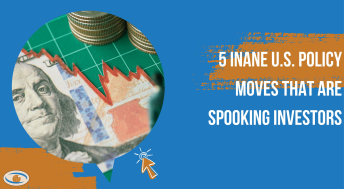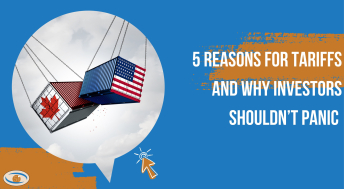Four Prior Stock Market Bubbles, and One That Might Become One
Every so often, a sector, theme or region suddenly grabs investors’ collective attention. A sector moves, people make money, and the media picks up on the gains and goes on — and on — about the theme. This causes more investors to take notice, get greedy and start buying. This sparks more media frenzy, and even more investors pour in. See where we are going here?
Stocks within the bubble theme go up, and up and up — until they don’t. Then everyone wants out at the same time. Lots of money can be made (by a few) on the way up, but it sure can be ugly for investors on the way down. Let’s look at four prior stock market bubbles, and one that might become one.
Artificial Intelligence (AI)
This theme gets our vote for the next most likely bubble. Investors are scrambling for new ideas, so the mere mention of AI in a press release moves stock prices, and large tech companies are mentioning AI hundreds of times in their conference calls. Investors see AI as the next greatest thing, one that will lower costs, boost productivity, boost margins and accelerate growth for hundreds of companies. Frankly, it probably will. But that, of course, doesn’t mean all AI companies are going to be winners.
AI development is expensive, and that’s why we would concentrate on the largest, cash-rich companies in the field. Just because a company mentions AI, or even has AI in its name, doesn’t make it a winner. There is going to be a lot of hype in this sector. Also remember that AI has the ability to destroy sectors and other companies, or at least lower their valuations. Investors need to be careful about what they buy in the AI field, but also about what they own elsewhere in case it is negatively impacted by AI.
3D Printing
This was a massive bubble several years ago. Everyone was going to have a 3D printer at home, maybe even one in every room. Trucking and delivery companies were going to go out of business as consumers just printed what they needed at home. The stocks of 3D companies soared and soared, and then crashed. What happened? Well, simply, demand just never materialized as expected. The technology was emerging, but stocks got ahead of themselves.
Now, after the bubble has popped, the sector looks a lot better. The technology has improved, and there is a real benefit in using 3D for many companies. The bubble popped, but, unlike some others, there is still a real industry here left in the ashes.
Dot-Com Stocks
Oh, what a heady time it was back in 1999. You could own a dopey gold company worth $20 million called Look for Gold Inc., change its name to Look for Gold.com and suddenly your company was worth $300 million. It was insane. The internet was going to change the world (I guess it did) and companies were hopping on the bandwagon. Investors got greedy, which is a necessity for any bubble.
Dot-com IPOs could soar 400 per cent on the day of their listing. No one cared about profits, only growth. If your company didn’t have dot.com after its name, it was going to be a dinosaur. It was, truly, a stupid time in the market. Fortunes were made by investors and companies that had no idea what they were doing. And then, as usual, the party just ended.
Profitability became important again, and the money pipeline investors were pumping to startups closed. Some stocks lost 90 per cent of their value in a matter of months, if they even survived at all. Amazon.com Inc. traded for less than 30 cents a share, though it was one of the survivors.
Electric Vehicles (EVs)
Tesla Inc. started this bubble off. That tends to happen when a stock soars to US$410 per share from US$1.05 in less than 10 years. The interesting thing with the EV bubble is that it spawned other bubbles. EV manufacturers soared in value, and so did battery, lithium and copper companies and anything else that went into the manufacture of EVs. Some of these bubbles are still ongoing.
There have been big successes and big failures in the sector, but the growth potential is intact. The market share of EVs is still low, but is expected to grow for the next 20 years at least. Governments are mandating EVs, and price points are coming down. This bubble may turn out to have some legs.
As with any investment, investors need to be careful with valuations and watch cash flows. Growing companies tend to burn through cash. Not all will survive. With mining companies, be careful not to buy tiny, promoted companies with little possibility of actually building a mine. Bigger companies are probably the better play if you want to participate in this sector.
Cannabis
In 2018/2019, investors truly seemed to believe that every citizen of Canada was about to become a stoner after cannabis was legalized in late 2018. Sales projections were through the roof. Companies were quickly created, raised billions in capital and watched their share prices soar. Large foreign companies with billions of dollars bought into Canadian companies. Then it all popped, very quickly. What happened?
First, it seemed no company could make any money. Most companies were bleeding cash. Second, demand was nowhere near predictions. It turns out that just because something becomes legal doesn’t mean everyone is going to buy it. Third, valuations were just ridiculous. Growth was great for a short period of time, but investors simply paid too much for this growth.
Now, the sector is pretty much a wasteland of company carcasses. Canopy Growth Corp., one of the early winners, was worth more than $15 billion less than two years ago. Today, it is worth less than $900 million.
Take Care,







Comments
Login to post a comment.